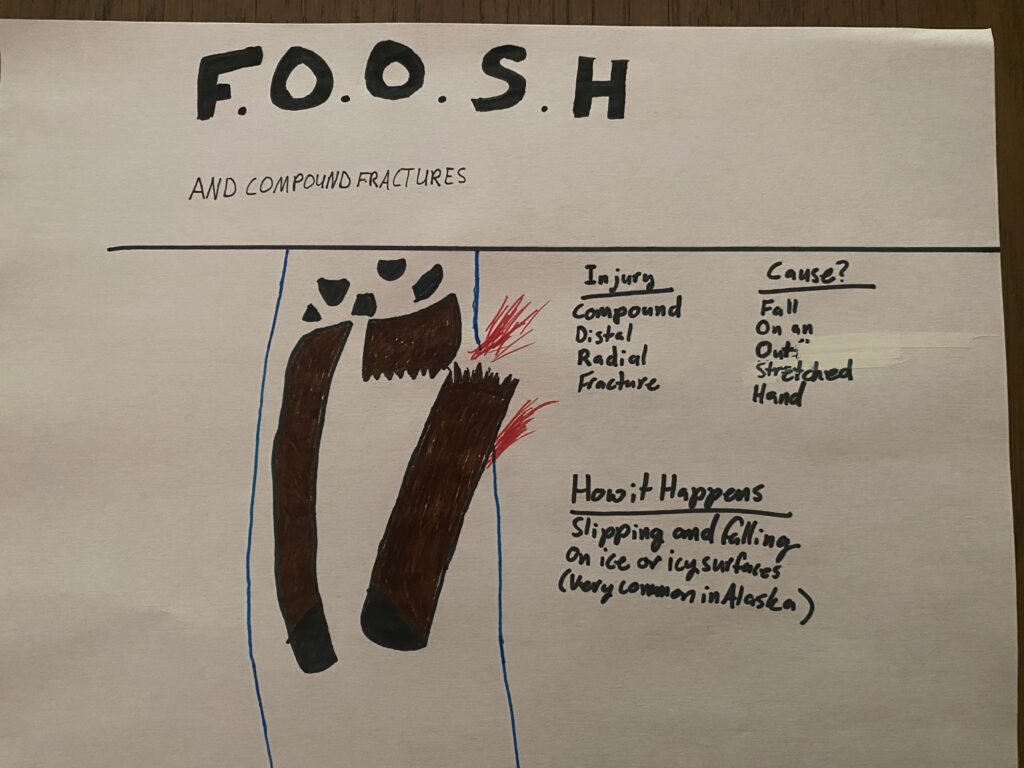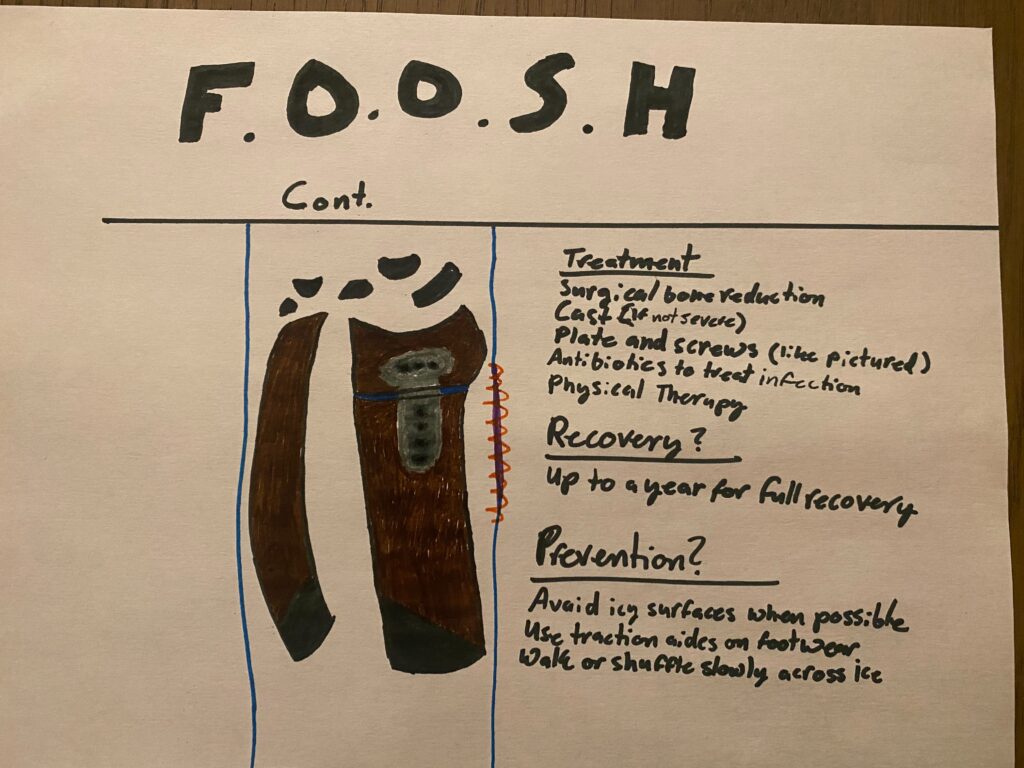

Alaska, Open Fractures, and FOOSH
The springtime in Alaska can be exciting, with light coming back and temperature increases by the day many residents rush outside to feel the warmth of the sun. There is however, a more dubious substance awaiting those who venture outside during the freeze/thaw cycle of spring, ice. If one is not careful ice can cause plenty of pain and injury causing them to miss those glorious summer months through recovery of a compound distal radial fracture.
How Our Radius Should Work
Normally the appendicular radial bone is located on the inside of the forearm. This long bone lives happily next to the ulna wrapped with smooth muscle. The radius bone provides much of the structure in the forearm, connects the wrist with the rest of the body, and creates a pathway for our nervous system to send and receive messages to and from our hand and fingers.
What Could Go Wrong?
When we slip on ice, we could easily suffer from a FOOSH (or fall on an outstretched hand) as the body reacts, we use our hands to try and break our fall. One of the most common occurrences from a FOOSH is a distal radial fracture, these can present in the emergency room as either a simple or compound fracture. In our case, it happens to be open or compound. An open fracture is an injury where the fractured bone and/or fracture hematoma are exposed to the external environment via a traumatic violation of the soft tissue and skin (Sop, 2021). It’s important to note that because of the danger of infection that is highly prevalent with most compound fractures, and for the fact that the external wound may lie at a site away from the fracture, they should be considered open until proven otherwise. Another point to remember in addition to this type of injury is that open fractures occur secondary to trauma and pose other risks such as soft tissue crushing, wound contamination, and skin degloving, where the upper layers of skin get stripped away leaving bare muscle exposed. These added traumas to the area make them more likely to have complications (Sop, 2021).
What’s Next?
If the fracture is severe or complex similar to the scenario we used, the patient would likely go to surgery. The most common surgical treatment of FOOSH related distal radial fractures, whether they are compound or simple, is the use of screws and plates to hold the broken bone in place, this is known as internal fixation. Another possible treatment that is less internally invasive would start in the emergency room where they may do a closed reduction of the bone and splinting with orthopedics follow-up, unless orthopedics follow-up can be immediate (Levine, & Sandalow. 2011). In orthopedics they will make a cast for the fracture, a below elbow cast is applied with molding over the volar mid-forearm and dorsally over the distal fragment. The cast extends from the distal palmar crease to just distal of the elbow flexion crease (Mehta, & Bain, 1999). After the cast is applies, or screws and plate, one can expect to have about a 6-week recovery period with up to a year until full bone strength is restored. This is not to mention a likely follow up with Physical Therapy/Occupational Therapy to restore mobility and function into the forearm and wrist.
Staying Safe from FOOSH
My biggest take away from research has been that the best means of treatment is avoidance. As you can see compound fractures are dangerous, not only because of the broken bone, but really because of the trauma and infection they can introduce to the surrounding area. In the end, avoid walking out on ice and slick surfaces whenever possible, if you must wear shoe-based traction aides, and take your time. Saving a few minutes on a chilly commute is never worth the possibility of ending up in the emergency room with a distal radial fracture or any fracture for that matter.

Great research, this is a good topic to talk about since we live in Alaska and the ground is covered in ice for over seven months a year. This is a common occurrence in our local population and is seen at our local ER frequently. In this case, the patient presents with an open fracture to the distal radius..That means the bone is poking through the skin and a wound exposes the bone. The radius is a long bone. Long bones function as levers. The distal radius is located by the wrist at the end of the radius bone. When a person slips on the ice it is an immediate natural reaction to want to break the fall by placing their hands out in front of you to catch yourself. Since the most common surgical treatment used for a compound fracture of the radius is using screws and plates the minimal healing time can be 6-8 weeks. The Dr may perform a surgical bone reduction. That means he may push or pull the ends of the fractured bone until they line up, and the plates and screws will be surgically placed. Staying safe from FOOSH seems to be the best way to avoid slipping on the ice, You can do this by wearing ice cleats if you are outside doing activities on the ice, or you can do the “Fairbanks shuffle”. This is when you walk on the ice by shuffling your feet keeping your center of balance over your feet.